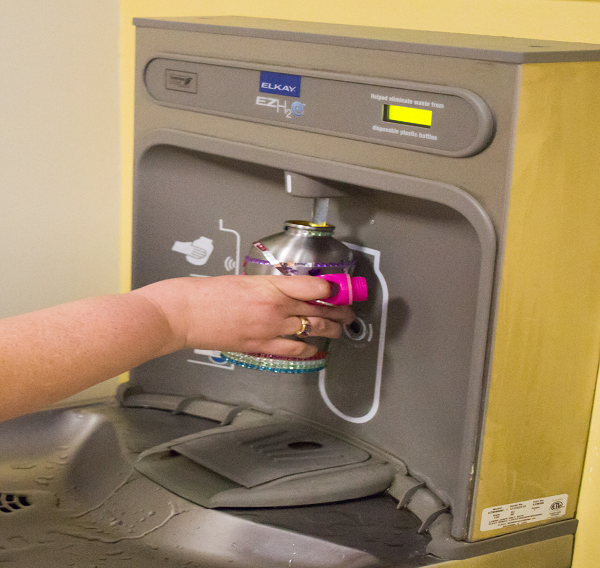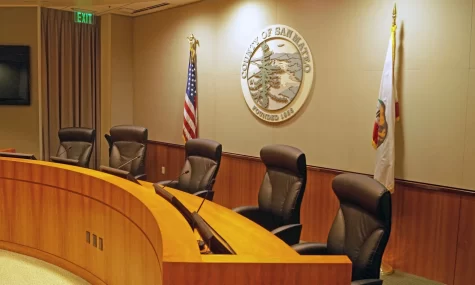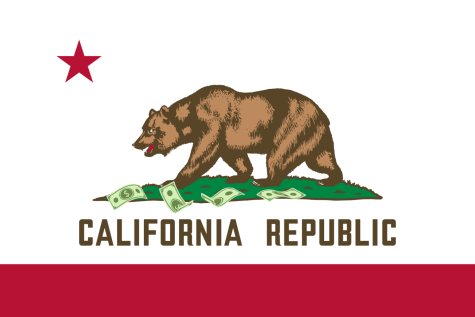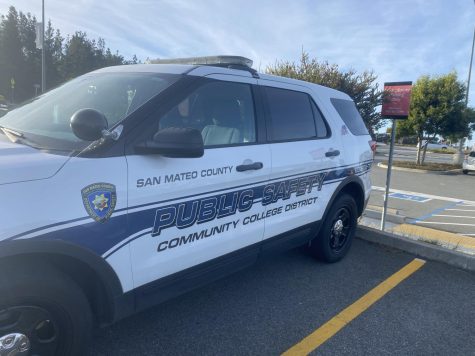Tap water deemed safe to drink despite concerns

President Obama declared a state of emergency on Jan. 5th due to Flint, Michigan’s lead-filled water, which made many people nationwide doubt the purity of their own water.
The issues with Flint’s water supply began because of a change in water suppliers. In order to save money, the city stopped using Detroit water, which was filtered with orthophosphate. This chemical builds up a protective layer inside the lead pipes that keeps the lead from leaching into the water. However, after switching to Flint River water, the pipes started to corode due to high amounts of chloride, reported Josh Sanburn and Lon Tweeten of the New York Times. The corrosive water, the decision not to replace the city’s pipes, and Flint’s old service lines proved to be a devastating combination.
The Environmental Protection Agency (EPA) has standards for drinking water in order to avoid situations such as Flint’s. EPA regulates more than 90 different contaminants and sets standards as close as possible to their desired standards in order to get the purest water, according to their website.
The Safe Drinking Water Act (SDWA), which was passed by Congress in 1974, allows the EPA to set a standard for drinking water by which all water is measured. However, the EPA can delegate this task to states as long as the states’ water complies with national standards, as recorded on watereducation.org.
Problems arose from the EPA’s delegation of water standards to states. The EPA comes up with a national primary drinking water regulation, also known as a primary standard that applies to public water systems. This primary standard can be legally enforced. However the national secondary drinking water regulation, or secondary standard, is non-enforceable. That means contaminants can cause skin or tooth discoloration and water can have an odor, flavor, or coloring.
When it comes to microbial contaminants, the EPA sets the maximum contaminant level goal at zero because one bacteria, virus or protozoan can cause illness. Carcinogenic chemicals only receive that rating if the chemical is at all unsafe and if it can cause cancer. For other chemicals that have adverse effects on health, the EPA sets a reference dose that estimates how much of a chemical a person can come in contact with over a lifetime and not have any health consequences. If the EPA can’t find a reference dose for a chemical, it sets up a treatment technique that will render the chemical harmless. This can be enforced and results in surface water treatment through disinfection and filtration, corrosion control of lead or copper pipes, and purity of chemicals used to treat the water.
Although all of these systems are in place to ensure drinking water purity, primary standards are not required to be met until three years after they are finalized. That span leaves room for error. And with approximately 85 percent of Bay Area residents serviced by a single water source, the Hetch Hetchy reservoir, that means any contamination in the water could have wide ranging consequences.
The water used and consumed in the Bay Area and around Skyline College campus comes from the Hetch Hetchy reservoir, located in Yosemite National Park. The water there is treated but not filtered because, coming from snow melt, it is considered some of the purest water in the country. However, there are many ways for water to become contaminated between the reservoir and its final destination.
One example is the 2014 switch for Bay Area residents from 100 percent Hetch Hetchy water to a combination of water from Lake Eleanor, Cherry Reservoir and Hetch Hetchy reservoir. However, five days after Bay Area residents started receiving their water, it was already beginning to become contaminated due to rain pushing sediment into the water, reported the SF Examiner. Plant life in the reservoir would typically keep the water from turning cloudy but the 2013 Rim Fire burned away the plants. Other concerns were that both Lake Eleanor and Cherry Reservoir are open for boating and swimming which allows for contamination of coliform bacteria from fecal matter, says Ellen Levin, a deputy manager at San Francisco Public Utilities Commission.
Lake Eleanor and Cherry Reservoir water was filtered at the Sunol Valley treatment plant, and water testing led Local and Regional Water System Manager David Briggs to deem the test a success.
A mere 25 minutes from Skyline’s campus is the Montara Water and Sanitary District Treatment Plant. This water treatment plant services residents in Montara and Moss Beach.
The filtration and treatment processes are pretty simple since the source of the water, a creek, has no housing developments above it. So only natural contaminants like sediment, minerals, and animal matter can be found in it.
The first step to cleaning the water is filtration. In order to remove water’s turbidity (haziness), sediment and other particles need to be separated from the water. This is done by pushing water through a maze of boards that slow down water flow and pick up silt particles. Then, it goes through three processes: water gets pushed through a mesh-like sieve coated in a sticky polymer that further filters the water by catching any organic material. Next the water gets pre-chlorinated before it gets put through a sodium chloride solution that disinfects the water by killing bacteria that can cause water-borne illnesses.
However, there is one drawback to water disinfectants. If the water disinfectants mix with organic material, this can cause Haloacetic Acids (HHAs) and Total Trihalomethanes (TTHMs), which can increase risk of cancer. But the EPA has set strict standards to regulate for these byproducts.
Although there are several other ways to remove contaminants from water, filtration is the best method because it doesn’t filter out all the minerals. While pure water may seem attractive, especially after the Flint, Michigan water crisis, it’s actually not as great as it sounds.
“You don’t want mineral-free water,” Julian Martinez, superintendent of the Montara plant, said. “Our bodies need minerals like calcium that can be found in water.”
Although not every naturally occurring mineral is good for you, like arsenic, filtration and water treatment can separate the bad minerals while still allowing the benefits of minerals like calcium or magnesium.
For those that think bottled water is a great alternative to tap water, they might be interested to learn that some bottled water companies receive their water from the same supply that the city’s tap water comes from.
“But no one should think that bottled water is better regulated, better protected, or safer than tap,” said Eric Goldstein, co-director of the urban program of the Natural Resources Defense Council in an article for Reader’s Digest.
Here at Skyline College, many students and faculty alike get their water through faucets, drinking fountains and the hydration stations instead of purchasing bottled water.
The hydration stations were installed in 2013 in an effort to reduce plastic bottle waste. Although the hydration stations don’t provide filtered water, they are the same quality as the tap water on campus.
“While there is increased national attention to water quality through municipal supplies because of the incidents in Flint, Michigan, tap water is a safe and affordable supply system,” Joe Fullerton, SMCCCD energy and sustainability manager said. “Many technical resources, policies, practices and regulations are in place to ensure that water quality in our area, including Skyline College, is safe and secure.”
And when it comes to Skyline’s pipes, there’s no need to worry about lead getting into the water. Pipe materials used here are brass, copper, galvanized malleable iron, galvanized steel, and other approved materials, based on the use of the pipe and its location.
Some of Skyline Biology Professor Nick Kapp’s classes have even tested Skyline tap water in the lab, and so far results have showed nothing, which is a good thing.
When it comes to Skyline College, Professor Kapp says, “Your tap water is safe.”












